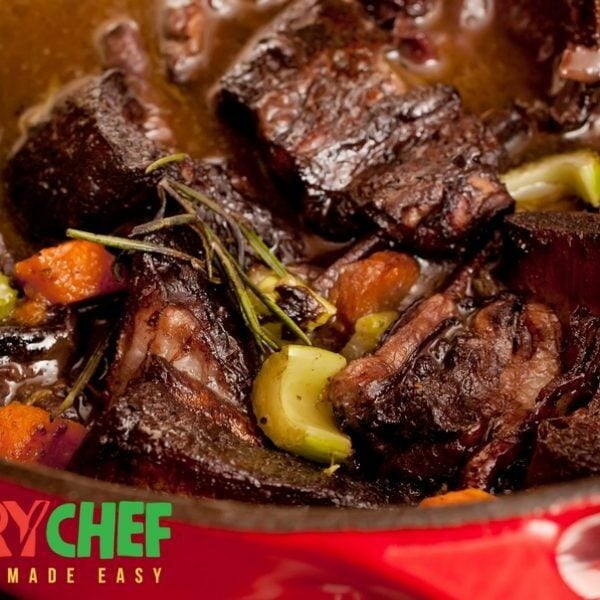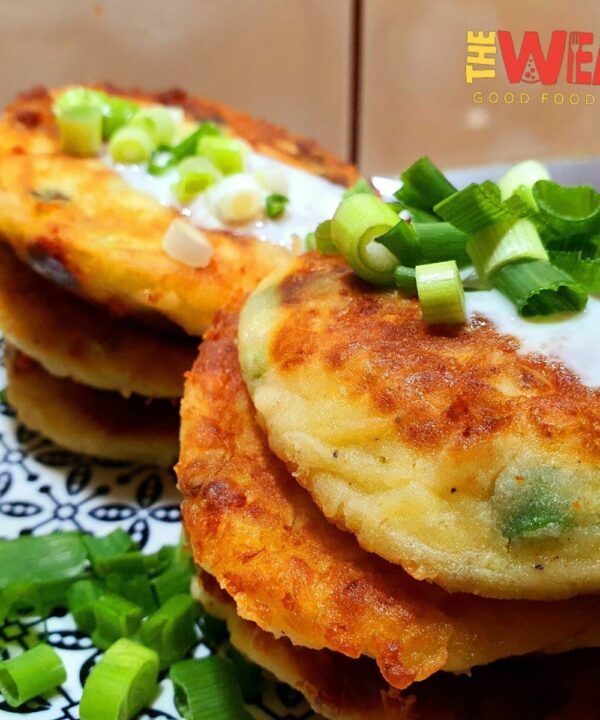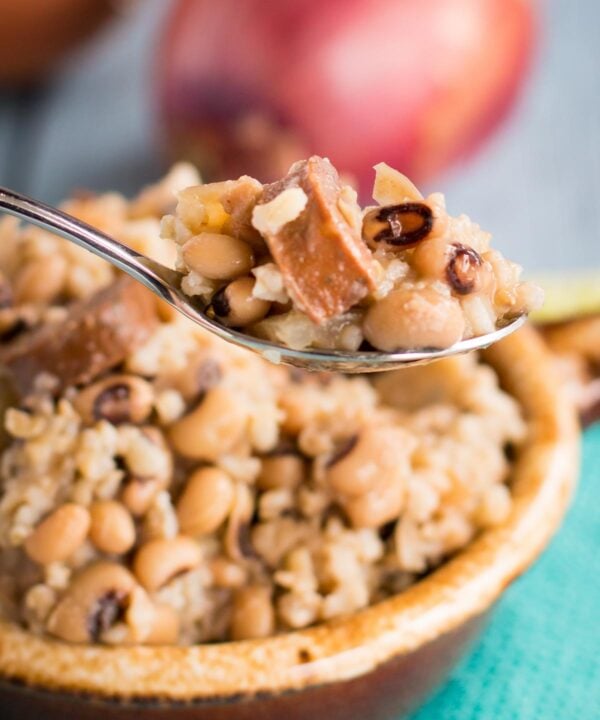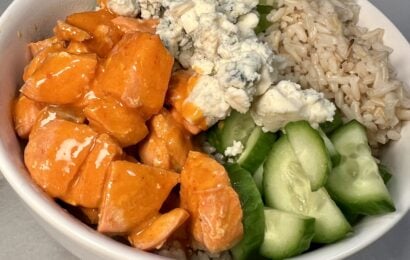Paleo + Vegan = Pegan. New Pegan recipes are the latest rage. Can I eat meat? A little bit. What about processed ingredients? Just a few. The diet mainly includes whole foods, which means a lot of fresh veggies.

You may be wondering: “What is pegan exactly?” And that’s a great question. Mark Hyman, MD, introduced the term on his website in a 2014 article titled: “Why I am a Pegan – or Paleo-Vegan – and Why You Should Be Too!”
In short, Dr. Hyman wrote his article in response to what he considers to be the fundamental question of our time: “What should I eat to feel good, lose weight and get and stay healthy?”
Essentially, the pegan diet combines the principles of both the paleo and vegan diets, based on the belief that whole foods balance blood sugar, reduce inflammation, and support optimal health.
The Pegan Diet 101

Upon first glance, the idea of combining paleo and vegan diets may appear to be contradictory. However, it isn’t. Instead, it’s a compromise bringing together positive aspects of each diet.
Meal planning at its core is simple. Basically, pegan recipes call for small portions of high-quality animal protein, lots of non-starchy veggies, plenty of healthy fat, and fruit. Also, you will be giving up dairy, grains, and legumes (beans, peas, lentils, and peanuts).
Tenets of the program shared by the paleo and vegan diets include:
- Low glycemic load: the pegan diet is low in sugar, flour, and refined carbohydrates.
- High fruits and vegetables: look for deep vibrant colors, and the more variety, the better.
- Low pesticides, hormones, and antibiotics: avoid GMO foods as well.
- No chemicals: no additives, artificial sweeteners, dyes, and MSG.
- Low in pesticides: think organic, no GMO foods, antibiotics, and hormones.
- Higher in good quality fats: omega-3, and fats from avocados, nuts, seeds, and olive oil.
If you decide to go pegan, you will:
- Eat a low-glycemic-load: focus on eating more protein and fats including avocados, nuts, seeds, olive oil, and sardines
- Eat the right fats: avocados, nuts, olive oil, omega-3, seeds. Avoid vegetable oils and soybean oil.
- Eat mostly veggies: vegetables should make up about 75 percent of your daily diet.
- Eat Lots of nuts and seeds: they are protein-rich and lower the risk of heart disease and diabetes.
- Avoid dairy, grains, and legumes
- Use sugar sparingly; think of it as an occasional treat
Controversy
The popularity of the pegan diet and pegan recipes rose dramatically since its introduction in 2014. For example, Pinterest reports that searches for “eating pegan” rose 337 percent last year.
However, the diet is not without its controversy. Jaclyn London, MS, RD, CDN, and Nutrition Director at the Good Housekeeping Institute recently spoke out about the pegan diet.
“The general parameters are basically taking the top line of two competing diet ideologies and combining the names to make for a great wedding hashtag,” London explained. “But in reality, most of these restrictions are unnecessary and frankly, quite costly and time-consuming.”
For example, the limitation on legumes is problematic, according to several dietary and nutritional experts. Today’s Dietician reported that legumes are a high-fiber, low-fat, and phytochemical-rich source of protein that plays an essential role in the “much-studied Mediterranean dietary pattern.”
Additionally, legumes are linked to several potential health benefits including the reduction of cancer risk and cardiovascular disease. Indeed, beans are ranked first in the list of top ten diabetes superfoods by the American Diabetes Association.
Positive reports
Equally important, Today’s Dietician reported several instances of positive feedback regarding using the use of pegan recipes.
For example, Janet Bond Brill, Ph.D., a cardiovascular nutritionist, and author, discussed the benefits of the pegan diet. “Fresh and local is great,” Brill explained. “I like that Dr. Hyman says to ‘use meat as a condiment,’ and I love the advice to increase intake of fruits and vegetables and to eat more fish.”
Likewise, Vandana Sheth, RDN and a spokesperson for the Academy of Nutrition and Dietetics, agreed with several aspects of the pegan diet. “The pros of this dietary pattern are its emphasis on vegetables, fruits, and omega-3 fats, and the fact that it provides adequate-protein,” Sheth said.
However, she also agreed with the assessment of the American Diabetes Association regarding some of the pegan diet’s restrictions.
“I disagree with the recommendation of avoiding or minimizing grains, limiting the intake of beans, and avoiding dairy as part of an overall eating pattern,” she stated. “These foods have been associated with positive health benefits.”
4 Delicious and Easy Pegan Recipes
We decided to present to you three pegan recipes to round our your introduction to the pegan diet. Also, we selected an entree, a side dish, a dessert, and a beverage. For that reason, you can combine the four recipes and prepare a full pegan meal.
1. Mediterranean Cauliflower Rice Recipe

The first of our pegan recipes comes to us from Sarah Nevins, the gluten-free chef behind A Saucy Kitchen. This low-carb and gluten-free recipe is delicious, and versatile as both an entree and side dish. Also, it only takes about 15 to 20 minutes to prepare.
What you need
- 1 medium cauliflower, about 3 cups riced
- 1 tablespoon olive oil
- 1/4 cup onion, chopped
- 2 cloves garlic, minced
- 1 tablespoon lemon juice, about half a lemon squeezed
- zest from half a lemon
- 2 tablespoons pinenuts
- 1/4 teaspoon red chili flakes
- fresh parsley, chopped
How you make it
First, remove the cauliflower leaves and stems. Next, chop it into bite-sized florets. Then push the cauliflower into a running food processor using the grating attachment.
Second, heat the olive oil in a deep skillet using medium heat. Next, add the onion and saute for about four to five minutes until it becomes soft and translucent. Then, add the garlic and saute for another 1 to 2 minutes.
Third, raise the heat to high and add cauliflower, lemon, zest, pine nuts, and chili flakes. Then, saute everything for about a minute. However, pay attention as you don’t want to cook it to the point the cauliflower becomes too mushy.
Fourth, remove from heat and stir in the parsley. Then, season with salt and pepper to taste and serve.
Notes
First, if you don’t have a food processor, you can rice the cauliflower using a box grater.
Second, feel free to add some raisins, nuts, or fresh basil when serving.
2. Warm Brussels Sprout, Bacon, and Spinach Salad Recipe

The second of our pegan recipes comes to us courtesy of All Recipes. This pegan recipe only takes about 30 minutes to make, and your family will love the warm bacon dressing.
What you need
- 8 slices bacon
- 2 cups Brussels sprouts, trimmed and thinly sliced
- 1 1/2 teaspoons caraway seed
- 3 tablespoons olive oil
- 3 tablespoons wine vinegar
- 1/4 teaspoon white sugar
- 1/2 pound spinach, chopped
How you make it
First, place the bacon in a deep skillet and cook over medium heat until brown. Next, crumble and set aside. Then, steam the Brussels sprouts until tender in a medium saucepan.
Second, heat the remaining bacon fat. Next, add the Brussels sprouts and caraway seeds. Then, saute everything for about one to two minutes until the Brussels sprouts are tender.
Third, add the oil, vinegar, and sugar to the skillet and stir. Next, add the spinach and saute the mixture for one to two minutes over medium heat until the spinach wilts.
Fourth, season the salad with pepper and sprinkle with bacon. Then, serve the salad warm as a side dish.
3. Toasted Coconut Chia Pudding Recipe

The third of our pegan recipes come to us from the Food Network. With the inclusion of chia and coconut, this delicious pegan dessert recipe is full of healthy fats.
What you need
- 1 cup unsweetened plain almond milk
- 1 cup coconut milk
- 1 teaspoon lime juice
- 2 tablespoons maple syrup
- 1 teaspoon vanilla extract
- 1/3 cup chia seeds
- 1 pinch of sea salt
- 1/3 cup chia seeds
- 1/3 cup unsweetened shredded coconut
- 2 cups cubed tropical fruit (mango, pineapple, etc.)
How you make it
First, whisk together the coconut milk, maple syrup, lime juice, vanilla extract, and sea salt. Next, add the chia seeds and whisk for an additional one to two minutes. Then, rest at room temperature for about 20 minutes, whisking occasionally.
Second, refrigerate the pudding for at least three hours. However, chilling it overnight works best.
Third, add the coconut to a large non-stick skillet and toast over medium heat for about one to two minutes until light brown.
Fourth, stir the pudding and add to single-serving sized bowls, Then, top with the cubed tropical fruit and toasted coconut. Serve immediately.
Notes
Be sure to use full-fat coconut milk when making this recipe. Also, you can feel free to substitute coconut flakes for shredded coconut.
4. Pegan Almond Milk Recipe
The final item in our list of pegan recipes is a Weary Chef original recipe. You will love this simple four-ingredient recipe. Additionally, this is an essential recipe as almond milk is a key ingredient in many pegan, vegetarian, and vegan recipes. For that reason, you might want to bookmark this article for future reference.
What you need
- 4 cups water, filtered
- 1 cup of almonds, soaked overnight
- 2 dates, pitted
- 1 teaspoon vanilla extract
How you make it
First, add the ingredients to a high-speed blender and blend until smooth.
Second, pour the liquid into a nut milk bag or piece of cheesecloth to filter.
Third, transfer the almond milk to a glass jar or pitcher and refrigerate for two to three hours before serving.
Notes
First, Nut milk bags are a bit of a novelty item and can be a bit pricey. For that reason, I prefer to use paint skimming bags which can be purchased at your local hardware or paint store.
Last, you can substitute other nuts such as cashews for the almonds.
What Do You Think About the Pegan Recipes?
We hope you enjoyed our article and pegan recipes. We covered a lot of the basics regarding the pegan diet. Now, we would love to hear from you. Have you tried the paleo diet? Have you tried being vegetarian or vegan? What about the pegan diet, have you tried it out?
Let us know your answers in the comments section below. And, as always, feel free to contact us if you have any comments, questions, or suggestions.
Until we meet again, bon appetit.













